That Certain Woman

Brief Synopsis
Cast & Crew
Edmund Goulding
Bette Davis
Henry Fonda
Anita Louise
Ian Hunter
Donald Crisp
Film Details
Technical Specs

Synopsis
Mary Donnell, the widow of gangster Al Haines, is quietly working for prominent lawyer Lloyd Rogers, when a muckracking journalist named Virgil Whitaker drags up her past and threatens her happiness. Rogers and Mary convince Whitaker not to print the story, but fearing exposure, Mary turns down millionaire playboy Jack Merrick's marriage proposal. Rogers, who secretly loves Mary, tells Jack her story, which only further endears her to him. On their wedding night, Jack's father follows the couple, demanding an annulment. Jack protests, but Merrick, Sr. stands firm. Mary gives up the fight, hoping that Jack will come after her. She moves in with her old friend Amy and hides her son Jackie from the Merrick family. Jack then marries society girl Florence "Flip" Carson, but on their honeymoon, Flip is permanently crippled in an auto accident. Eventually, Mary accepts Rogers' love and financial support, hoping that Mrs. Rogers will not be hurt. However, when Rogers dies in Mary's apartment, the press suggests that Jackie is his child. Jack visits Mary and learns that he is Jackie's father. Merrick, Sr. takes legal action to adopt Jackie, but it is Flip, whom Mary both admires and pities, who inspires Mary to give Jackie up. Years later, Virgil, who has befriended Mary during her troubles, finds her in Monte Carlo and tells her that Flip is dead, leaving Jack free to return to Mary.

Director

Edmund Goulding
Cast

Bette Davis

Henry Fonda

Anita Louise
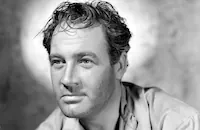
Ian Hunter
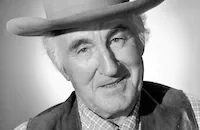
Donald Crisp

Hugh O'connell

Katherine Alexander
Mary Phillips

Minor Watson

Sidney Toler
Charles Trowbridge
Norman Willis
Herbert Rawlinson
Tim Henning
Dwayne Day
Ben Welden

John Hamilton
George Renavent
Barry Noble Downing
André Rouseyrol
Cliff Saum
Rosalind Marquis
Roger Davis
Claudia Simmons
Don Downen
Milt Kibbee
Richard Jack
Corbin Blundell
Paul Russell
Hal Craig
Frank Darien
Loia Cheaney
Myrtle Stedman
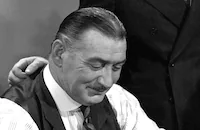
Edward Keane
Gordon Hart

Mary Mclaren

Richard Loo
Frank Faylen

Willard Parker
Granville Owen
Paddy O'flynn
Mike Lally
Charles Sherlock
Ted Thompson
Philip Waldron
Don Turner
Jack Ryan
Andre Cheron
George Sorel
Bernice Pilot
Etta Mcdaniel
Forbes Murray
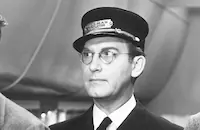
Emmett Vogan
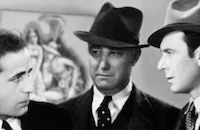
Jack Mower
John Harron
Crew
Mary Deary
Margaret Donovan
Alma Dwight
Ted Ellsworth
Bob Fellows
Leo F. Forbstein
Edmund Goulding
Ernest Haller
Chuck Hansen
Claude Hutchinson
Jack Killifer
William Kuehl
Robert Lord
Orry-kelly
Max Parker
John Prettyman
Al Roberts
Bert Six
Max Steiner
Dolph Thomas
Jack L. Warner
Stanley Young

Photo Collections
Videos
Movie Clip




Trailer
Film Details
Technical Specs

Articles
That Certain Woman
Davis was singled out for special praise, in a film which "demands more of her talent than any film in which she has appeared... She displays screen acting of the highest order." This was surely music to the ears of Jack L. Warner and his executives, who had been very carefully molding Davis' stardom.
For example, the original ending of That Certain Woman was not an optimistic one. Warner executive Hal Wallis had his assistant send a memo to associate producer Bob Lord asking for the ending to be changed: "Owing to the fact that in the picture Marked Woman [1937] Bette Davis walks off into the fog for a sort of indefinite finish, and again in Kid Galahad [1937], Eddie Robinson is killed and Davis walks down an alley to an uncertain future, Mr. Wallis feels that to give her an uncertain finish for the third time in a row might not be good for audience psychology." Wallis' instincts were good; the picture grossed almost $1 million, continuing a streak of Bette Davis box-office winners.
Davis' own reaction was mixed. While she never much cared for the movie itself ("it tasted a bit of soap," she wrote), she loved working with writer-director Edmund Goulding, who had also made the first version of this story, The Trespasser (1929), starring Gloria Swanson.
"That Certain Woman," Davis recalled, "was certainly not one of my favorite scripts... There was a falseness to the whole project. But I did meet and work with Edmund Goulding for the first time... He concentrated on attractive shots of me - in other words, gave me the star treatment. It was the first time I had this. I was always a member of the cast - a leading member - but not made special in the way Goulding made me special in this film. And in the last scene in chiffon, a large beautiful picture hat, and a glamorous hairdo, I looked really like a 'movie star.'" Goulding would go on to direct Davis three more times, in Dark Victory (1939), The Old Maid (1939) and The Great Lie (1941).
With Davis rising quickly through the ranks at Warner Brothers, she was able to choose her leading men, and for That Certain Woman she chose Henry Fonda. Their lives had intersected a decade earlier when they worked in the same New England summer stock company. Even before that portion of their lives, they had met when Fonda gave the 17-year-old Davis a tour of Princeton University. One night, Fonda later wrote, while he and a friend took Davis and her sister out for a tour of the campus by moonlight, he nervously gave Davis an innocent kiss on the lips. A few days later he received a letter from her: "I've told mother about our lovely experience together in the moonlight. She will announce the engagement when we get home." Fonda was so naïve that he wasn't sure at first whether this was a joke!
Davis remembered and liked Fonda enough to request him for this film and then again for Jezebel (1938), which began production a month after That Certain Woman opened in theaters. Fonda was still on the rise in Hollywood, with his most notable credit being You Only Live Once (1937), but around the corner were Jezebel, The Mad Miss Manton (1938), Jesse James (1939) and Young Mr. Lincoln (1939).
Producer: Robert Lord, Hal B. Wallis, Jack L. Warner
Director: Edmund Goulding
Screenplay: Edmund Goulding
Cinematography: Ernest Haller
Film Editing: Jack Killifer
Art Direction: Max Parker
Music: Max Steiner
Cast: Bette Davis (Mary Donnell), Henry Fonda (Jack Merrick, Jr.), Anita Louise (Florence Merrick), Ian Hunter (Lloyd Rogers), Donald Crisp (Jack Merrick, Sr.), Hugh O'Connell (Reporter Virgil Whitaker).
BW-93m. Closed captioning.
by Jeremy Arnold

That Certain Woman
Quotes
I'm warning you, lay off--or you'll wake up one morning and find your hat floating in the lake, and who do you think will be under the hat?- Mary Donnell
Trivia
Notes
According to Warner Bros. records, Constance Bennett was interested in playing Mary, and John Barrymore and John Litel were tested as Rogers. Litel was later cast as "Clark Tilden" but was replaced by Minor Watson. The film was based on Edmund Goulding's earlier script for The Trespasser, starring Gloria Swanson, which he also directed (see AFI Catalog of Feature Films, 1921-30; F2.5834).















